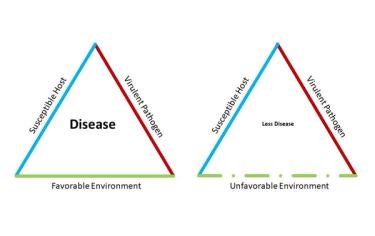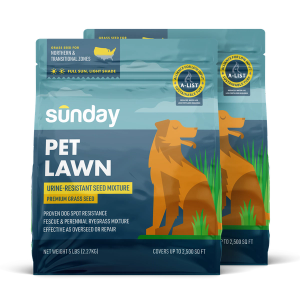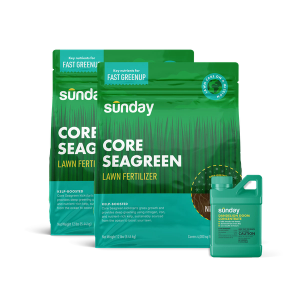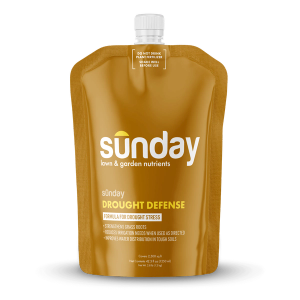How do lawns get disease?
A lawn disease must have a pathogen, a susceptible host, and the right environmental conditions to take hold. This is called the disease triangle—if one side is missing, the disease can’t take over.

Fungi in the soil or plant leaves cause most turf diseases. Changes in the weather or an already weak lawn stressed by compacted soil, heat, or other pests like insects or weeds make your grass more prone to disease.
What is integrated pest management for lawn disease?
Integrated Pest Management, or IPM, is a sustainable lawn care philosophy and practice built on proactive measures to reduce reliance on chemicals.
For lawn disease, it aims to use natural pest prevention to suppress the disease while minimizing risks to people and the environment by only using fungicides when necessary. Natural pest prevention, or IPM, goes a long way to help prevent and treat disease outbreaks. Growing a healthy and strong lawn is the first step.
Integrated pest management for lawn disease 101
Scout your lawn
Slow down and take time to look at your lawn. Like most things in life, identifying the issue early enough can help treat it more successfully. Inspect spots as soon as they appear and rule out other potential causes of damage.
Sunday Tip:
Did you know? Common disease lookalikes include other common brown spots in lawns. This can include:
- pet spots or pet pee
- drought stress
- herbicide damage
- insect damage
Identify the disease
It’s time to identify your lawn disease.
Knowing common diseases in your area and closely inspecting the affected area can narrow down the potential choices. Not all diseases will damage or kill the grass, so knowing what you’re up against will help you determine the next steps.
Reduce disease with lawn care
The same cultural controls that prevent disease outbreaks can also help control them if they occur.
- Avoid overwatering
- Improving drainage
- Aerate the soil
- Reduce shade
After you implement these, review what control measures you took, when you took them, and their effect. This is an important step in an IPM plan because it will help you evaluate what additional preventive measures, if any, should be adopted for your lawn routine.
Determine when to use fungicides
This can depend on aesthetic preferences, turfgrass species, disease, and recovery potential. Most lawns can withstand a small amount of disease pressure without being treated with fungicides. Plus, not all diseases damage the turf.
If the disease is mostly a cosmetic concern (e.g. how your lawn looks), don't apply fungicides and wait until conditions improve and the disease regresses.
Plant the right grass for your lawn
After the disease's presence subsides, plant better grass in its place. First, be sure you’ve solved the underlying environmental issue, and then opt for disease-resistant grass to ensure your lawn grows back happy and healthy.
Sunday Tip:
Certain grass species and varieties are resistant to specific pathogens. However, even the most resistant grass species can get disease in poor growing conditions. Some things to avoid:
- Improper irrigation
- Low fertility or nutrient deficiencies
- Compacted soil
- Too much shade
Continue to monitor your lawn
Keep track of when you inspected your lawn, what diseases and activity you saw, the size and placement of the affected area, and what treatment actions you took, if any.
Preventing lawn disease in your lawn
Most lawns can—and do—defend themselves against diseases. Additionally, many common lawn grass diseases affect lawns for only a short period of time. When conditions become more favorable for grass growth, lawns will often recover on their own without intervention. If an existing lawn is susceptible to frequent and severe disease outbreaks, consider completely renovating the lawn with a disease-resistant turfgrass. Otherwise, following good lawn care practices—proper irrigation, fertilization, mowing, and soil management—will promote healthy grass that better withstands disease pressure.
Cited sources
Lawn Diseases: Prevention and Management Guidelines. University of California IPM.
Developing an Integrated Turfgrass Pest Management Program. PennState Extension.



















